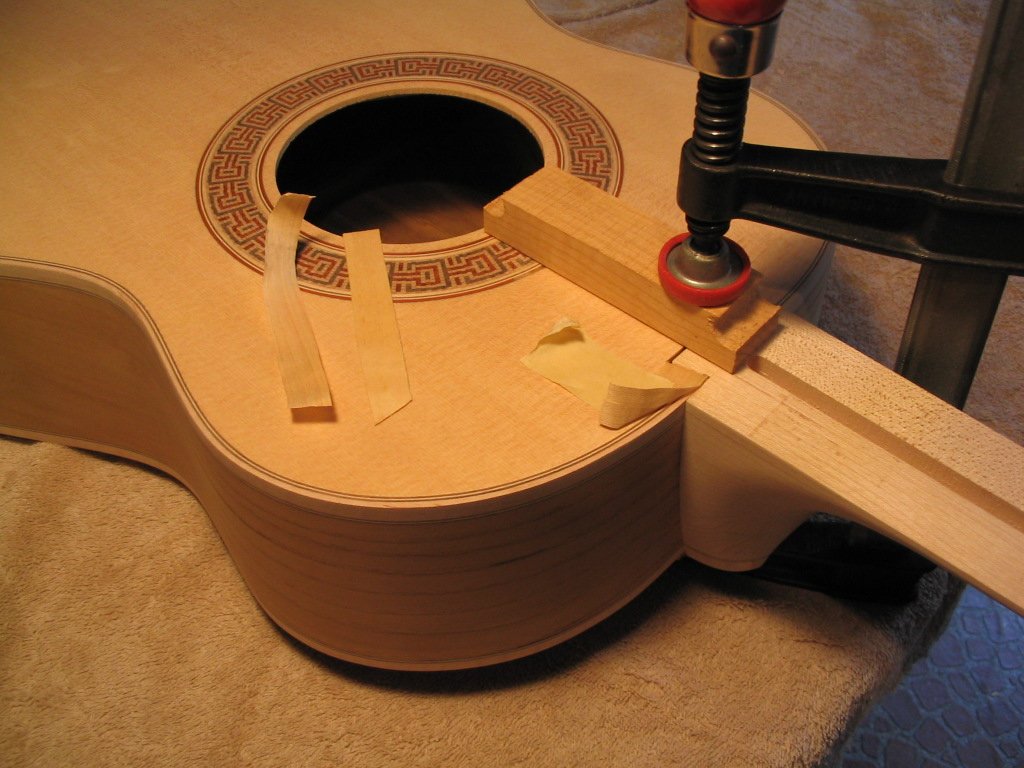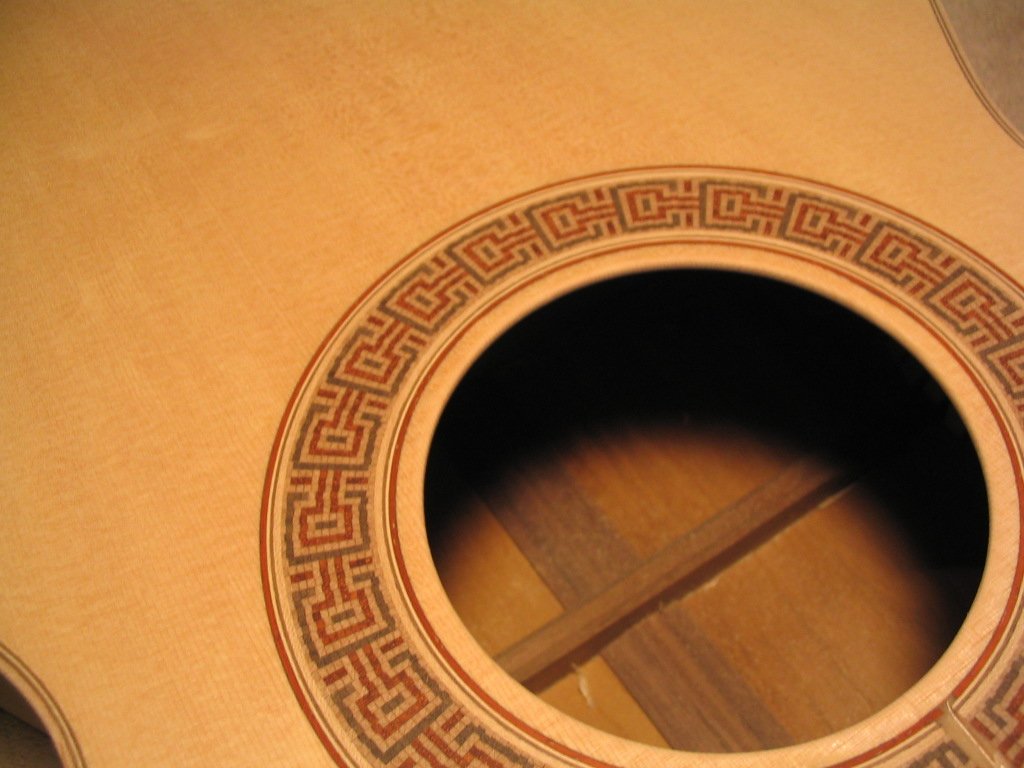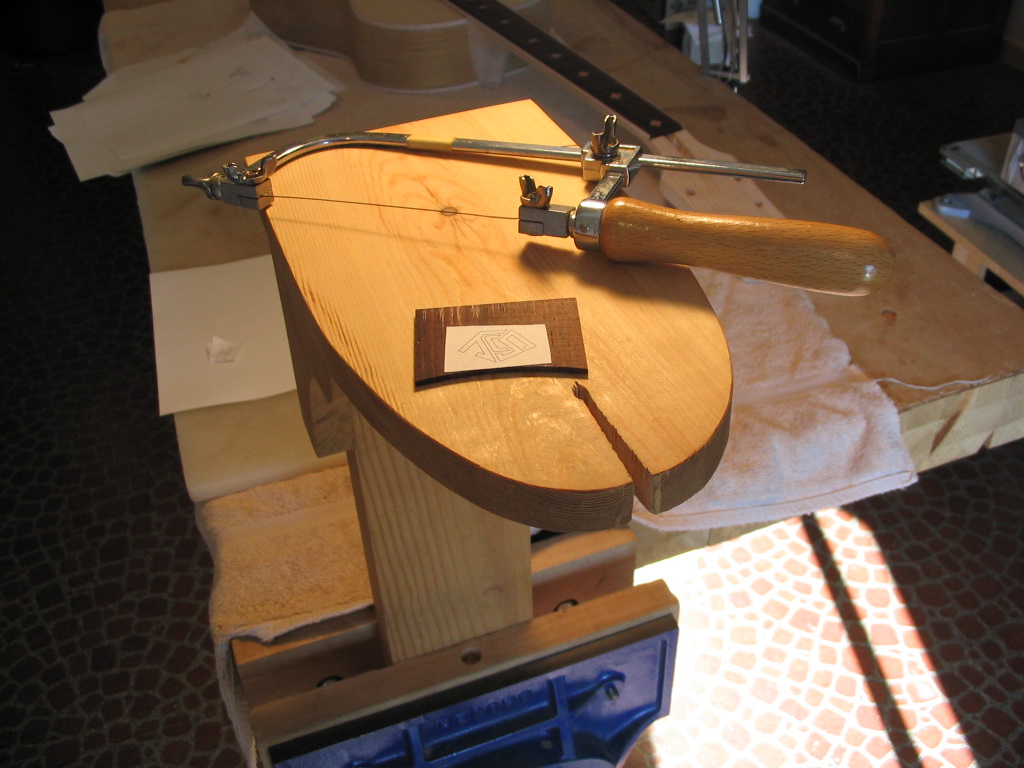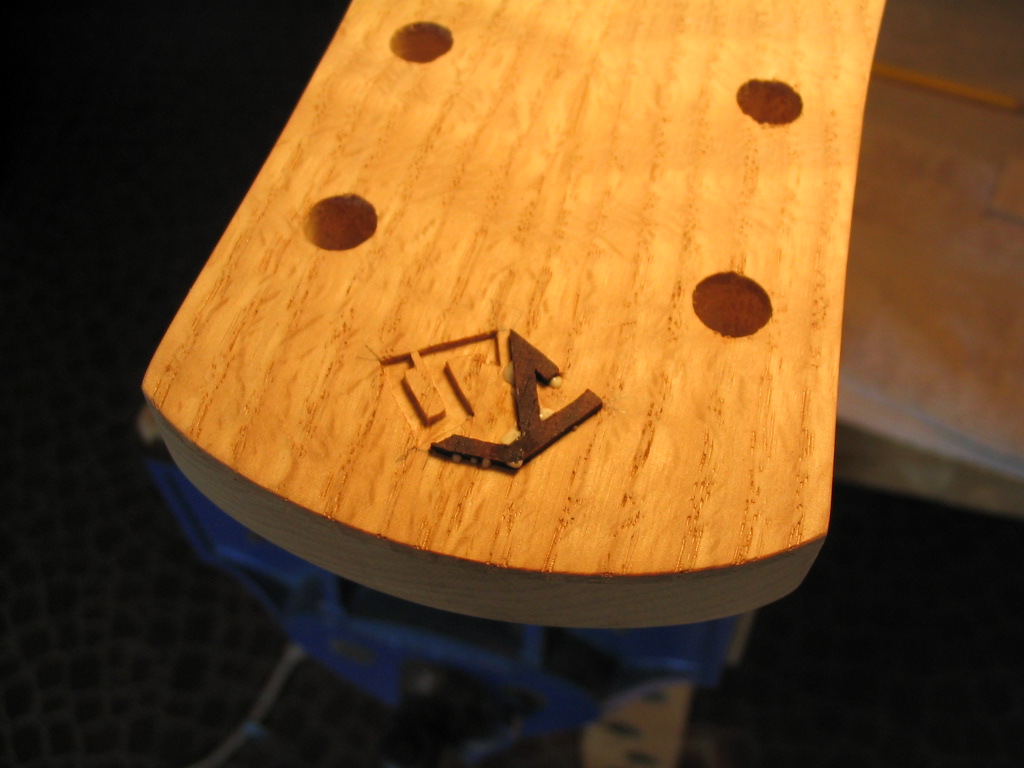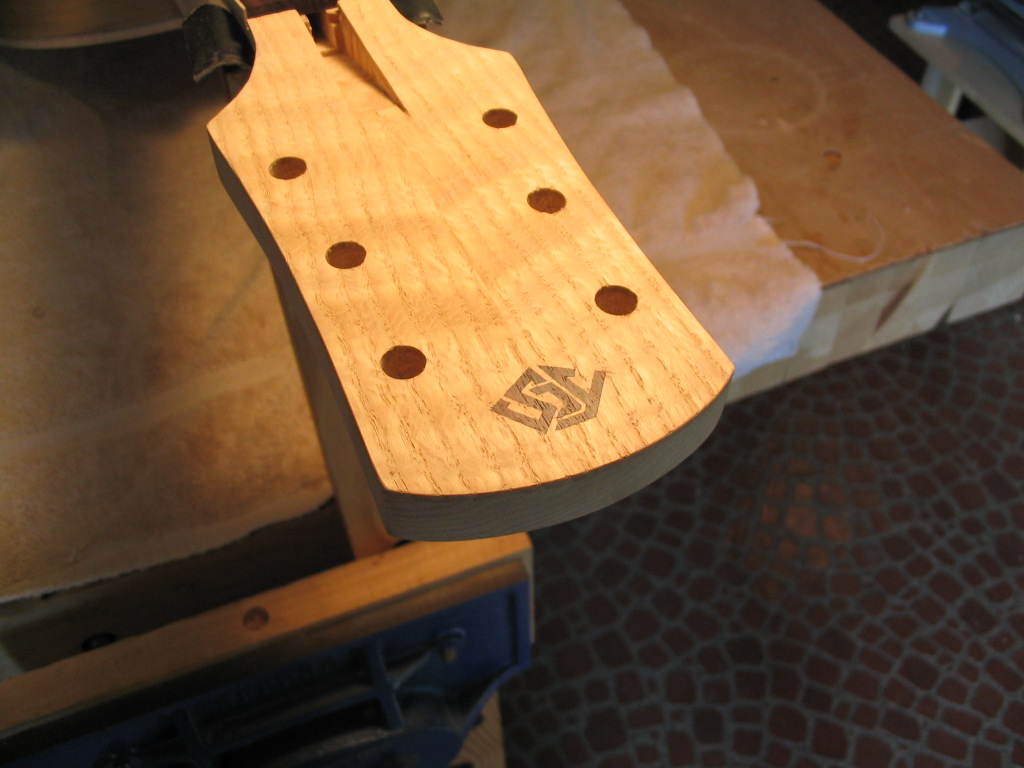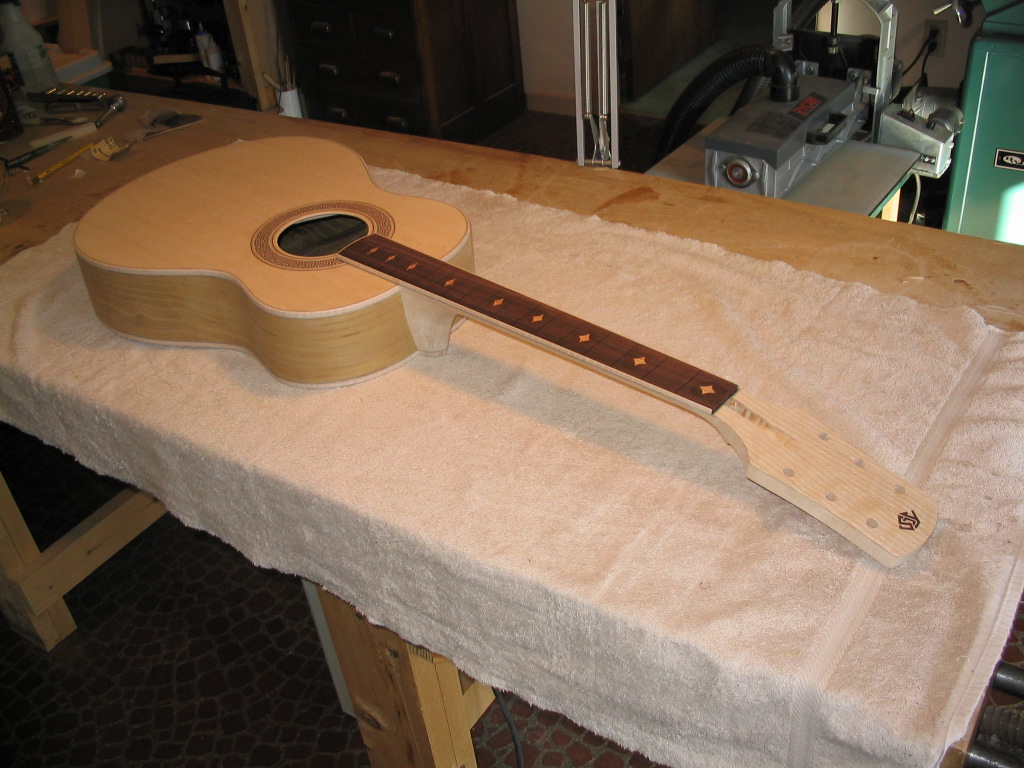
When the joint is fully seated, the purfling on the body should just line up with the veneer shims glued under the heel cap.
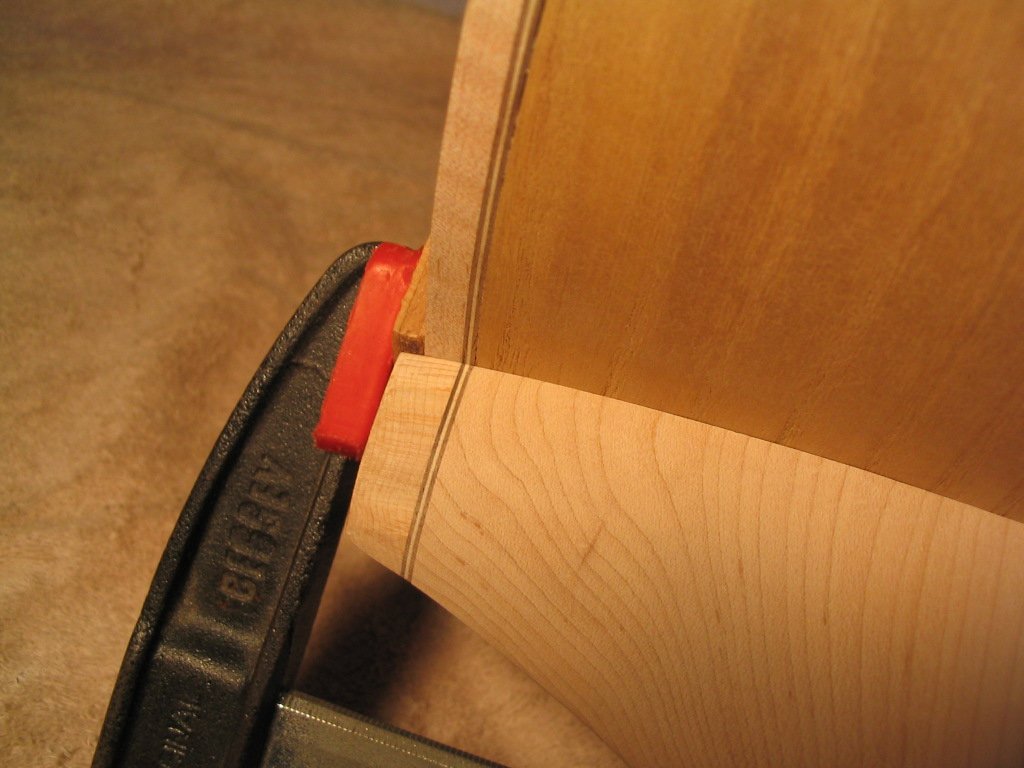
When the glue has dried, the shims can
be trimmed where they protrude from the joint, and the neck top surface
and guitar top can be lightly surfaced with a sharp hand plane.
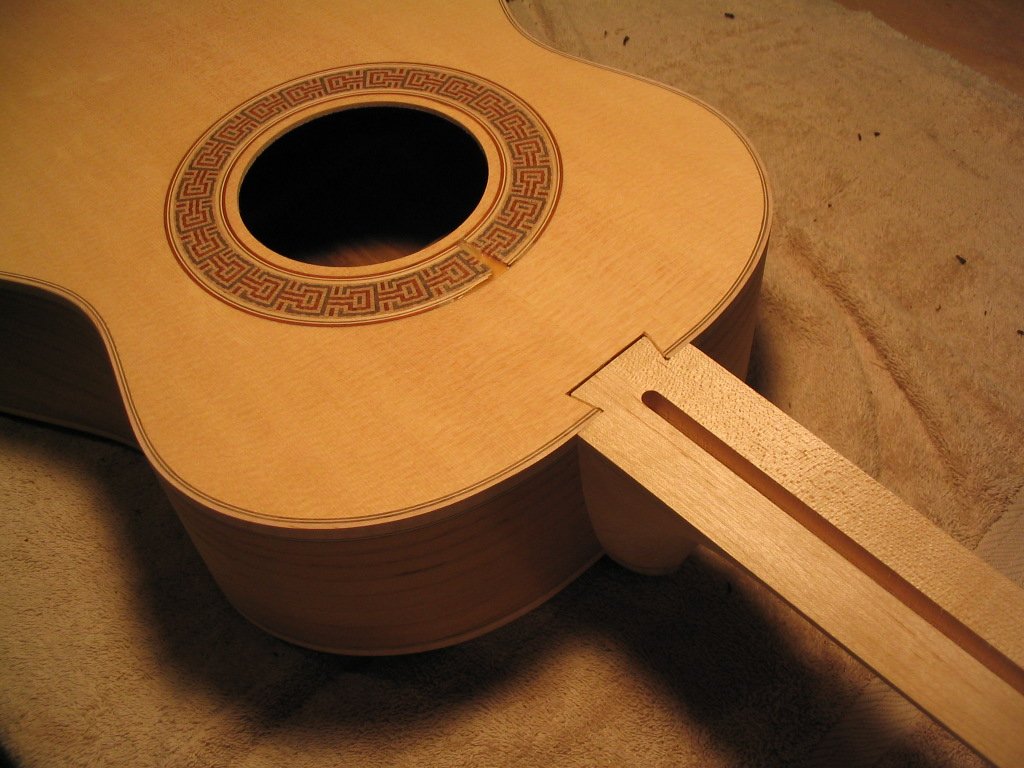
The
heel cap is deliberately made overly thick so that it can be trimmed
flush with the back of the guitar after the neck is attached. Note the
U-shaped clamping caul on the neck used to secure the guitar while the
heel cap is trimmed.
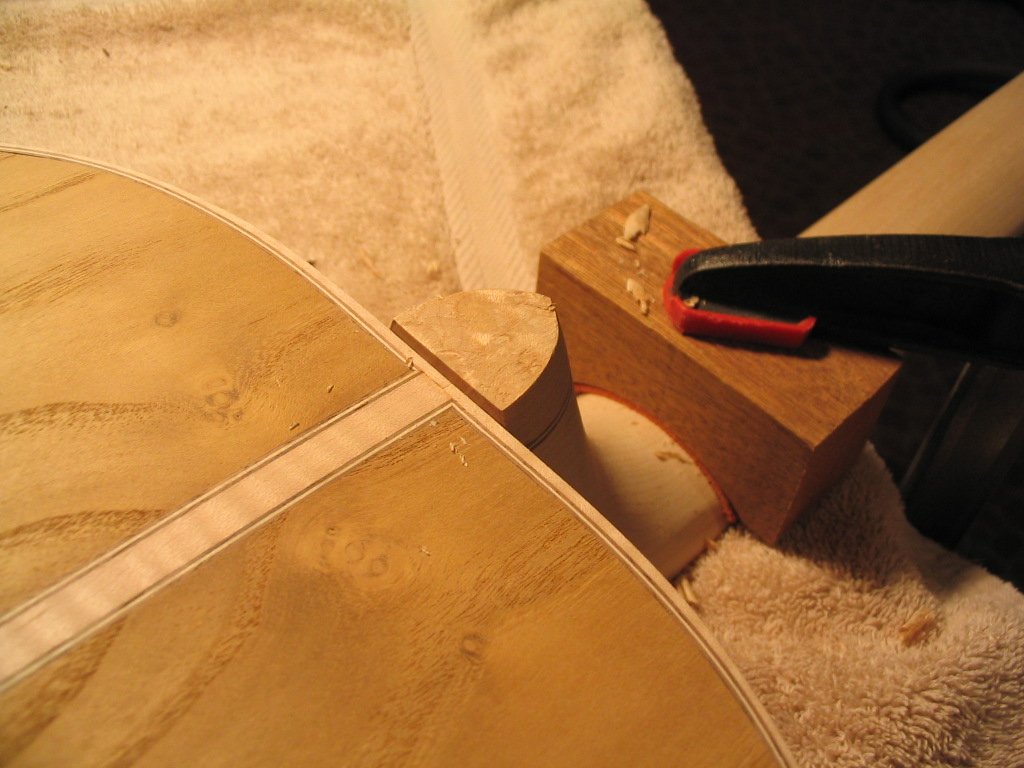

At this point the edge of the soundhole can be rounded to soften it with 150-grit sandpaper.
Once the neck is attached, the fretboard can be glued onto the neck and body. The bound and inlayed fretboard is shown below.

The fretboard is attached using a
straight stiff clamping caul for the top, and V-shaped cauls lined with
leather for the neck undersurface. The V-shaped cauls help to put
pressure toward the outside edge of the neck, tending to counteract the
tendency for the neck gluing surface to become slightly convex across
its width when the glue is applied. This happens because the glue is
water-based, and thus tends to swell the wood slightly at the point of
contact.
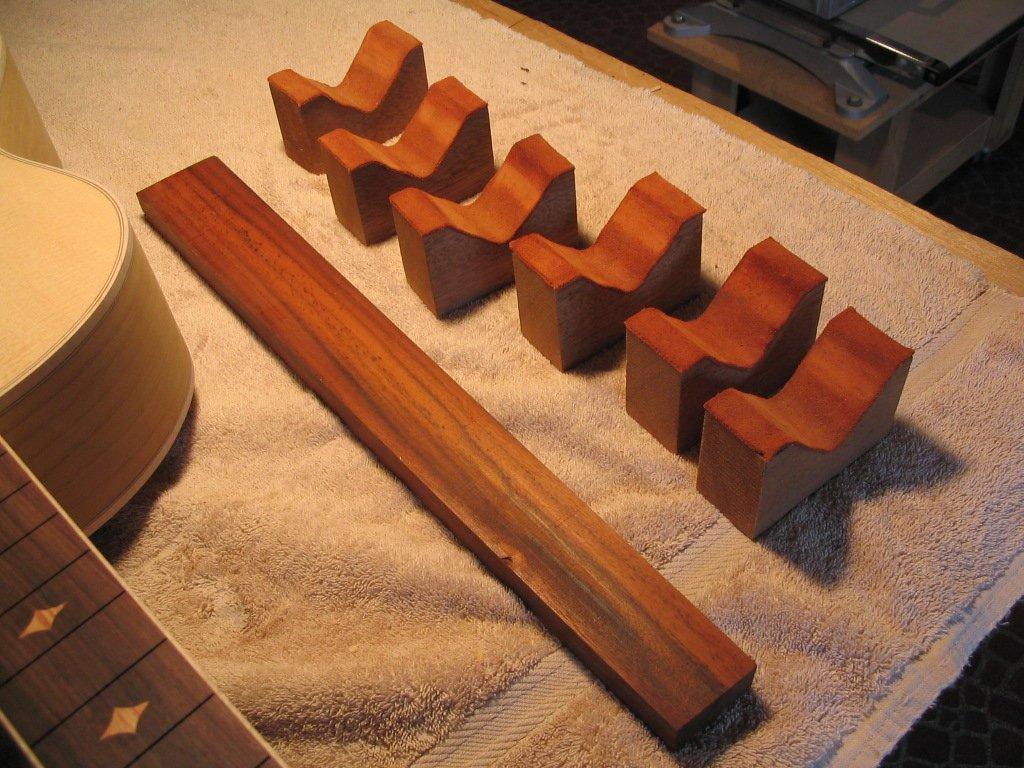
Glue is applied to the neck surface,
being careful to keep it out of the trussrod channel. Glue is also
applied to the fretboard, on the portion which extends over the body.
The fretboard is then placed onto the neck and body, and clamped in
position. A small mark should be placed on the side of the fretboard to
make sure that the 14th fret falls exactly on the neck-body joint. Note
that the fretboard will tend to slide around as the clamping pressure
is applied, especially if too much glue is used. The proper alignment
can be maintained by tightening the clamps slowly and checking that the
fretboard hasn't moved out of position, either side-to-side or
lengthwise.

The portion of the fretboard which
extends over the body is clamped with the used of clamping cauls within
the body, sized to protect the braces. Glue squeezeout can be cleaned
up once the clamps have been tightened.




